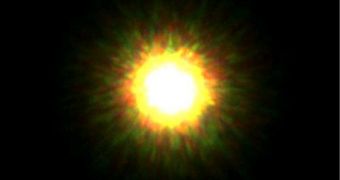Some time ago, astronomers were thrilled to announce the fact that an extrasolar planet had been imaged directly for the first time ever. However, the discovery had not been confirmed by independent, follow-up studies, which is precisely what happened recently. An independent science team managed to attest to the accuracy of previous discoveries, showing that the exoplanet is actually revolving around a Sun-like star. The celestial body itself is most likely a gas giant, up to eight times more massive than Saturn, Space reports.
One of the things that casted doubts on the original discovery was the remote possibility that the planet was in fact not a part of the solar system astronomers observed it to be in. This could have been the case if the observations had been made at a time when a fortuitous alignment of celestial bodies made the exoplanet appear to be orbiting the star 1RSX J160929.1-210524, as seen from Earth. “Our new observations rule out this chance alignment possibility, and thus confirms that the planet and the star are related to each other, explains David Lafreniere, an astronomer at the University of Montreal and Center for Research in Astrophysics of Quebec.
The expert was the leader of the new research study, but also the author of the 2008 investigation that first revealed the existence of the exoplanet. The celestial fireball it revolves around is located in the Upper Scorpius Association, a stellar cluster located some 500 light-years away from Earth. The star, about 85 percent the mass of the Sun, is very young. Astronomers estimate that it formed about 5 million years ago. For comparison, the Sun is about 4.6 billion years old.
The new investigations were carried out using the Gemini Observatory. The two telescopes that make this observations center are located in Hawaii, atop Mauna Kea, and in northern Chile, atop Cerro Pachon. Both instruments have 8-meter-wide mirrors, and they employ adaptive optics technology. This means that they are capable of compensating for the distortions that the Earth's atmosphere causes in incoming light signatures from other stars. This is the same effect that makes poets' stars twinkle, but drives astronomers crazy.
“Without adaptive optics, we would simply have been unable to see this planet. The atmosphere blurs the image of a star so much that it extends over and is much brighter than the image of a faint planet around it, rendering the planet undetectable. Adaptive optics removes this blurring and provides a better view of faint objects very close to stars,” Lafreniere concludes.

 14 DAY TRIAL //
14 DAY TRIAL //